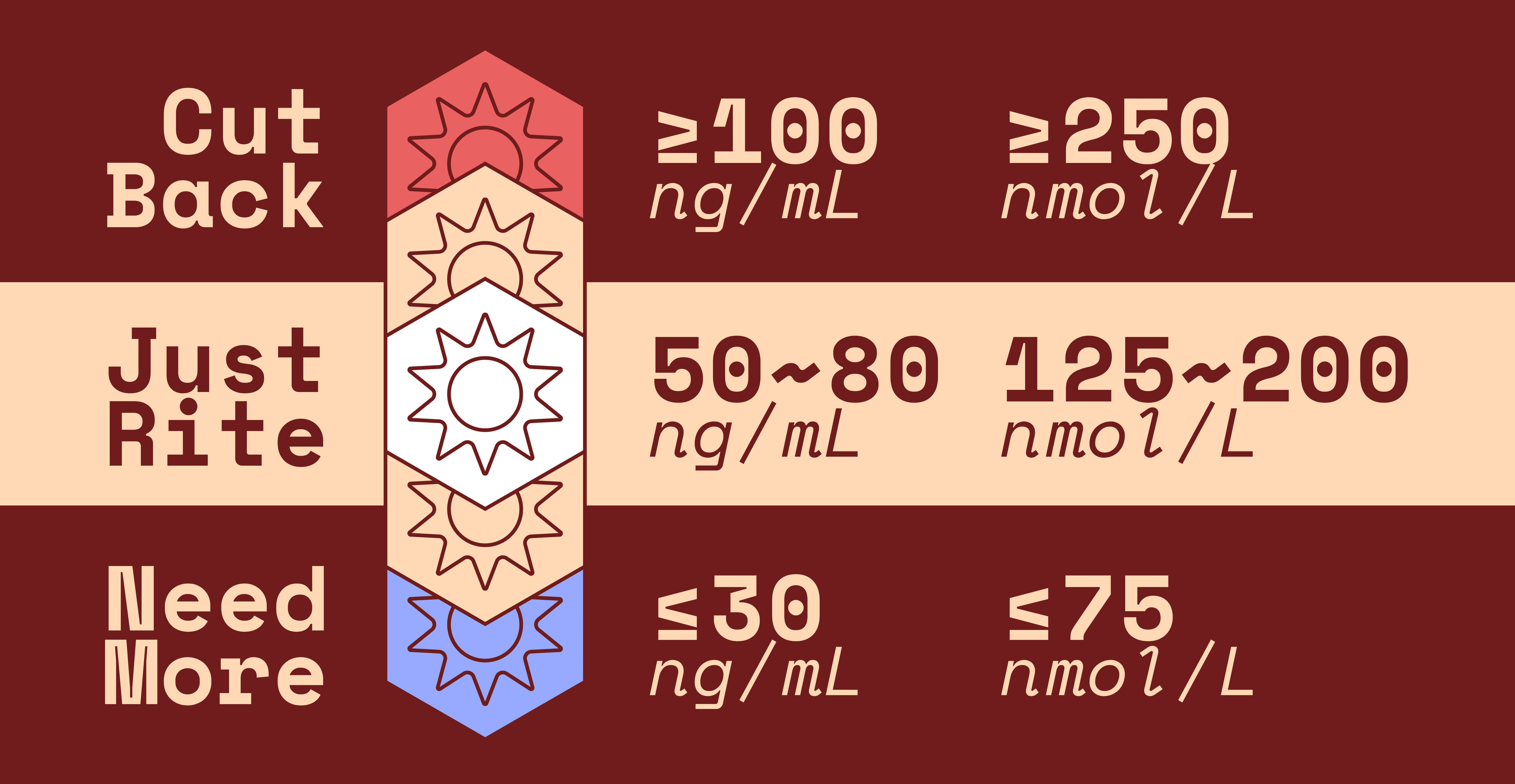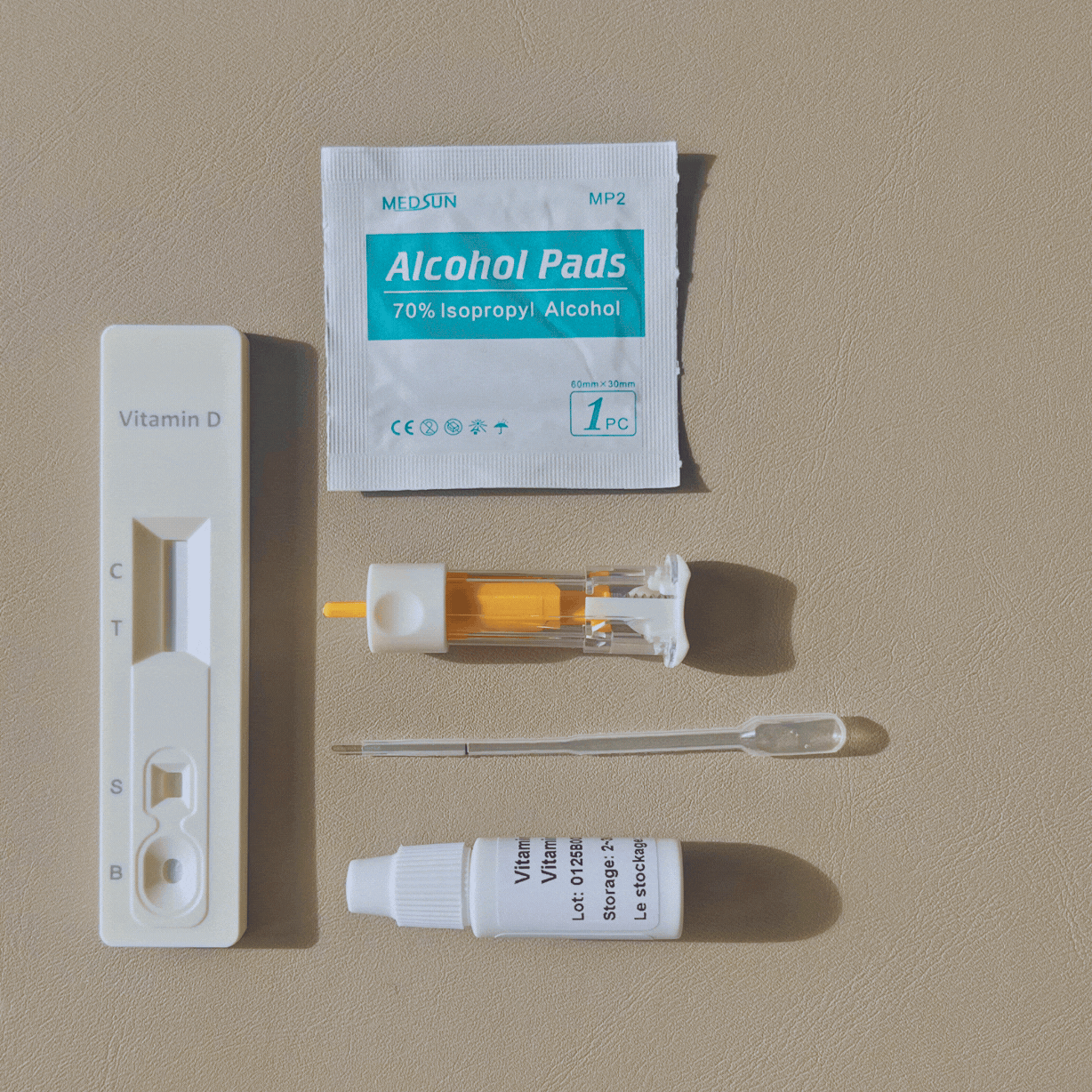
Why test your Vitamin D levels?
Vitamin D is a critical nutrient which helps your body handle metals in a wide range of tissues. Because the human body produces Vitamin D from sunlight on skin, many assume they have enough. But in North America, because of the northerly latitudes, everyone is at risk of having too little 25-OHD.

We don't test our Vitamin D enough
We've interviewed hundreds of Canadians and found <5% have tested their Vitamin D levels within the last 2 years.
The main reasons being:
1. Not part of annual check up
2. Not typically covered by public insurance
3. People don't know where to get tests
Why it matters:
Having sufficient amounts of Vitamin D in your body is essential for a strong immune system, mood, and bone density.

How do Vitamin D levels affect health and wellness?
Vitamin D is a crucial nutrient. Imbalances can create serious health issues. In the human body, Vitamin D levels enable immune system performance, and allow ion channels to function. Ion channels are critical in the nervous and musculoskeletal systems, because they allow for electrical signaling between cells and support the accumulation of bone-strengthening mineral metals like calcium. Without enough Vitamin D, these systems can break down. In extreme deficiency, bone loss and osteoporosis are the key risk, especially in older people. With too much Vitamin D, your body can poison itself by processing calcium too fast, leading to a condition called hypercalcemia with a range of life-threatening symptoms.
Is there a "right" amount of Vitamin D to take?
The recommended daily intake of vitamin D varies by age and health needs. For most adults, the range is from 400 to 800 IU per day. In winter, supplementing with 1,000 to 2,000 IU daily can support optimal health.
Because everyone's body and genetics are different, taking a supplement might not mean you have the optimal level of 25-OHD in your blood. Supplements take about 90 days to influence blood 25-OHD levels. (So it makes sense to pick up 2 rapid tests and use them three months apart.)
There are two forms of Vitamin D: Vitamin D2, which is produced by plants, and Vitamin D3, produced by animals (including us humans). Both get converted to 25-OHD in the human bloodstream. Many people assume that since we are walking Vitamin D factories, and Vitamin D is present in food, there's no need to supplement or test their 25-OHD levels. Not the case!
In North America, the angle sunlight reaches us at means that even in the sunniest times of the year we might not get enough sun exposure for a baseline healthy level of Vitamin D. Indeed, Vitamin D rapid tests are the top-selling category globally, because from Scandinavia to sun-basked Saudi Arabia, human life (whether in the extended darkness of Norwegian winter, or in too much sun to go outside during a Riyadh summer) gets between us and optimal Vitamin D levels.

What's the fastest, easiest test?
We sell one of the world's top-selling, Health Canada approved Vitamin D tests at an unbeatable price. We provide accessible, available, affordable, accurate, approved tests to our customers across Canada and North America. In just ten minutes, you can go from finger prick to Vitamin D range faster than finding a parking spot at LifeLabs.
